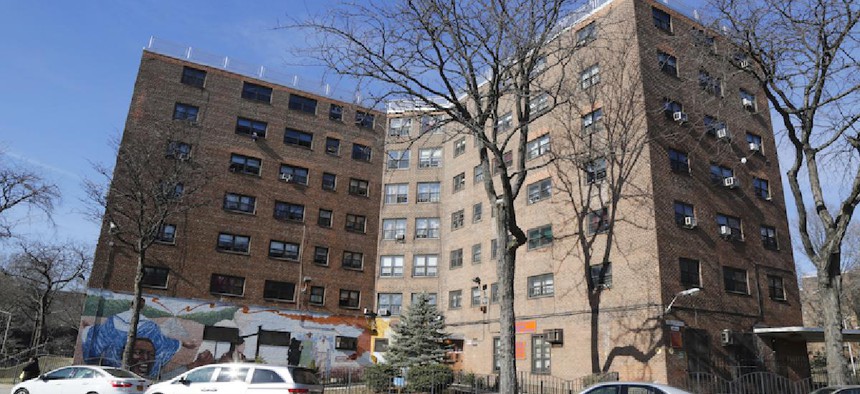In the closing days of September, the New York City Council held hearings focused on lessons to be learned from London’s tragic Grenfell Tower fire, which in early June killed more than 80 people, an estimate expected to rise. All of that building’s tenants were low- to moderate-income and living in public housing.
Unfortunately, that residential building was not equipped with a sprinkler system to extinguish the fire before it grew out of control or, at the very least, provide residents with extra time to escape. In England, regulations require buildings taller than 30 meters (about 98 feet) and constructed after 2007 to have fire sprinklers. The 24-story Grenfell Tower was built in 1974 and therefore was not subject to this safety requirement.
In our own city this could be comparable to some of the New York City Housing Authority’s buildings. NYCHA owns 176,066 apartments across 2,462 city buildings, home to some 400,000 limited-income tenants. This is about 8.1 percent of the city’s rental unit inventory, making NYCHA our metropolis’ largest landlord. Over 90 percent of NYCHA is not sprinkler-equipped.
In 2015 Mayor Bill de Blasio proposed “NextGeneration NYCHA,” a ten-year plan aimed at preserving and improving public housing. Only weeks ago he ordered the implementation of the “1.5 Degree Celsius” plan, to align the Big Apple with the goals of the Paris Climate Accord.
These two mandates present the city with a unique opportunity to tackle two major problems plaguing NYCHA at once: Fire safety and a long standing black mold and leaking pipes crisis that residents have been raising the alarm about for years.
Many of NYCHA’s buildings, most of which were constructed between 1945 and 1965, have pipes hidden behind their plaster and sheet rock walls that only had an expected lifespan of 50 years. That means that buildings constructed circa 1945 have been operating with 72-year old pipes, while the newest vintage, the 1965 pipes, are 52 years old, two years beyond their expected lifespan.
A relevant parallel would be to ask middle-aged and older New Yorkers, “How are your arteries, heart and lungs as compared to when you were young?”
Like those in a human body, the ‘arteries’ or pipes in such high-occupancy buildings also develop plaque. Pipes can operate beyond 50 years, but like human arteries they begin to calcify, clog, corrode, leak and rupture. What follows is black mold, which unless swiftly and correctly removed becomes a serious health hazard.
While common sense to many in the building industry, tenants and administration officials may not be focused on preventive maintenance to systems hidden outside of sight and behind apartment walls.
These ancient, inefficient building circulation systems also dramatically increase the cost of heating and cooling, resulting in furnaces requiring a significant excess of oil, natural gas or steam to produce and circulate sufficient heat and hot water, further increasing the negative impact of greenhouse gas emissions from NYCHA.
Washington, D.C. has recently proposed a 14 percent cut to HUD’s budget. This would mean less housing funds for our city, coupled with tighter state and municipal budgets in the future. An investment now in re-piping these NYCHA buildings would produce energy cost savings that would repay the capital outlay within five to seven years. It would also eliminate black mold and associated illnesses, lowering insurance costs and resulting in a greener public housing agency.
If the city commits to fixing the arteries of these aging residential properties, it would also be the most cost-effective opportunity to add fire suppression systems. It is the morally right thing to do and it makes fiscal sense. After the projects’ capital costs are recovered, the resulting savings, in dollars and lower energy use, continue to effectively pay back NYCHA annuities in both fiscal and environmental terms for decades to come.
Since the City Council began mandating greater requirements of sprinkler systems in the early 1970s, annual fire deaths in New York City have dropped steadily, from an average of about 270 deaths in 1970 to only 48 deaths in 2016, even as modern fires today burn 800 percent faster, hotter and more toxic due to greater use of petroleum-based chemicals in home furnishings.
NYCHA ought not to pass up these crucial opportunities to make hundreds of thousands of New York City residents – not to mention its own property – safer. As the city’s largest landlord, is it not their responsibility to set the standard in remaking older buildings into safe modern ones?
Patrick Dolan, Jr. is the president of the 8,500-member Steamfitters Local Union 638 in New York. Steamfitters design, install and maintain fire sprinklers; gas, water and steam piping; and heating, ventilation and cooling systems in tens of thousands of high-occupancy commercial, retail and residential buildings.


